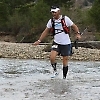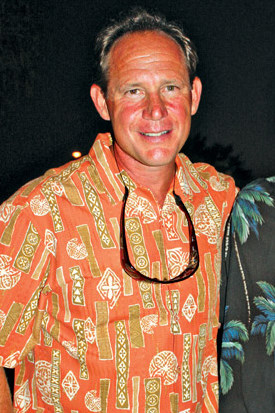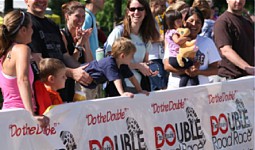UjENA FIT Club Running Interviews and articles with 100 Interesting People
Best Road Races and the UjENA FIT Club is speaking with 100 people who we feel have a lot to say about running, racing and fitness We will give you background information as will as their insights into the future. Be sure to post your feedback and comments.
Read All UjENA FIT Club Running Interviews
Posted Thursday, February 19th, 2015
by Bob Anderson, publisher of Double Runner magazine (Photo Bob Anderson with world record holder Julius Koskei wearing the yellow... Read Interview
Posted Monday, March 17th, 2014
The Chris Jones story is a running saga of epic proportions. Don't try this at home! (Photo - Leadville 100... Read Interview
Posted Sunday, March 23rd, 2014
Aging ever so gracefully at age 59 and forging a career record that becomes ever more impressive, Sharon Vos is... Read Interview
Posted Tuesday, November 5th, 2013
By David Prokop Editor Best Road RacesJulius Koskei (pronounced Kos-kay), who set the current world record in the Double Road... Read Interview
Jeff Sacchini - Interview No. 17
Monday, February 13th, 2012
A race promoter shares step-by-step the start up moves, the expense and emotional rewards of holding a world-class race
Six years ago Jeff Sacchini was a fruit and vegetable distributor in Modesto, Calif. where he lived with his wife Liz and three daughters. Jeff loved to run from as far back as he can remember. After selling his business in 2005 Jeff came out with some significant capital and set his heart on holding a world class road race in what he believes to be paradise on earth, the lush green island of Kauai. The Ujena Fit Club picked this race as one of the Best Road Races in North America. Bob Anderson will be running the half marathon this year as one of his 50 races celebrating 50 years of running and racing. (Interview by Laura Dayton) 1. Let’s go back in time. You live in Modesto, Ca. so how did you pick the island of Kauai for your race?
Photo: Tyler McCandless won the 2011 Kauai marathon setting a course record. He used his prize money for the down payment on a house. Tyler told Writing About Running, "The biggest thing I took home from the race was the Aloha spirit Kauai had to offer. I'll go back to that race every year because that race changed my outlook. Jeff Sacchini and race director Bob Craver are the nicest people I've ever met." 2. Was it hard setting up a business so far away? 3. Had you ever held a similar event, or been involved in any other races?
Photo: The early morning start. 4. Once you decided to move ahead, what were your first goals? 5. How much money did you have when to begin this project? 6. When all is said and done, how much does it cost to put on an event of this caliber?
Photos: All finishers get an aloha welcome when they finish. 7. What are your biggest revenue sources? Comments and Feedback
 It is interesting to read about what goes on behind the scenes in making an event happen. I look forward to running your half marathon. Thanks for the invite...see you in September! It is interesting to read about what goes on behind the scenes in making an event happen. I look forward to running your half marathon. Thanks for the invite...see you in September!Bob Anderson 2/13/12 4:33 pm  Great interview Jeff. Thanks for your committment to putting on an event that does so much for your community and has such a positive impact on the participants. Great interview Jeff. Thanks for your committment to putting on an event that does so much for your community and has such a positive impact on the participants. Lisa Anderson-Wall 2/14/12 8:41 am |
,,,,, | 8. How exactly does that work? 9. How does prize money figure into the equation? Has that increased over the years? 10. How closely do you think prize money is connected to race revenues? 11. How did you go about getting sponsors? 12. How would you describe your position in terms of putting on the race? The money man? The idea man? The businessman? Or the running man?
14. How did you find your course timer and get the certifications? 15. Is your race a Boston qualifier? 16. Have there been any OMG moments where you wonder why you ever got into this? 17. Who on your staff is paid? 18. Do you draw a salary? 19. What is the largest single expense? 20. In terms of appeal, what are the most important facets of your race? 21. How many runners have come to your races? 22. And you think you’ll cap it at 4,000? 23. How many volunteers do have, and where do get them from? 24. You’ve run successful companies, and still do for profit. How does that compare in terms of job satisfaction to being a race promoter?
25. Can you elaborate on that? 26. Do you run any other races or attend them to keep up with the market, and if so, which ones? 27. What advice would you give to someone who is about to start a new race? |

Copyright 2025 UjENA Swimwear · Site Map · Feedback · Tell A Friend · Nominate a Race
Leaderboard · UjENA 5K · Double Road Race · UjENA Jam · UjENA Network

















 13. How did you actually map out the race course?
13. How did you actually map out the race course?  Photo: Ujena Fit Club member Michael Wardian finished second in the Marathon. The finisher right behind him is finishing the half.
Photo: Ujena Fit Club member Michael Wardian finished second in the Marathon. The finisher right behind him is finishing the half.
